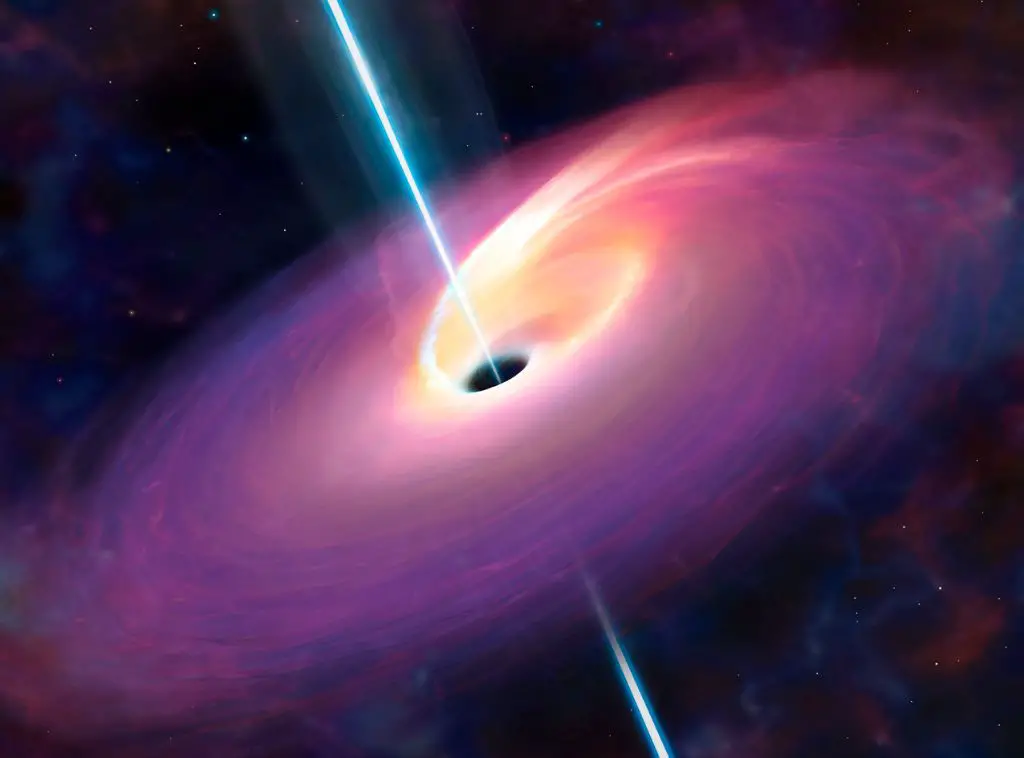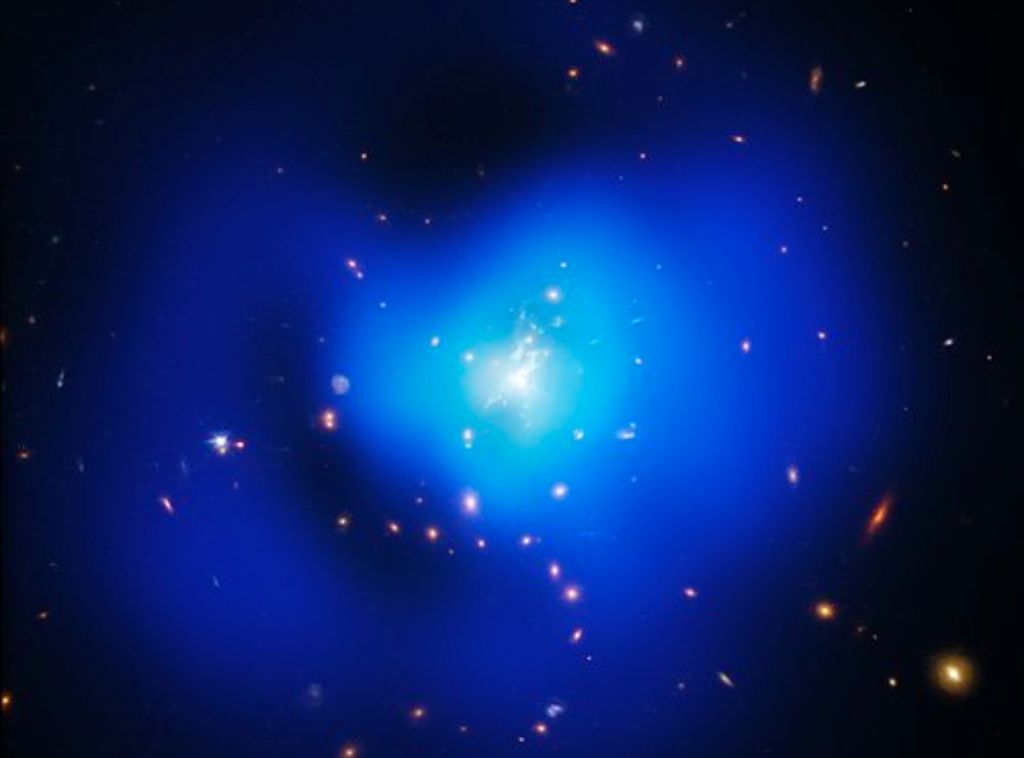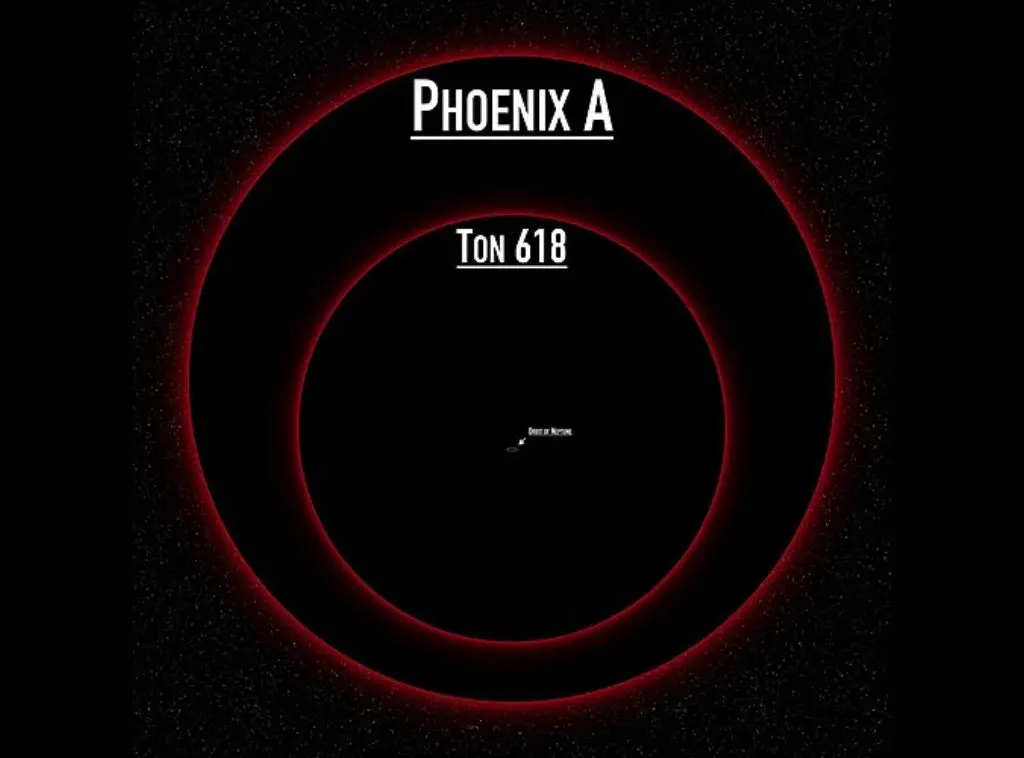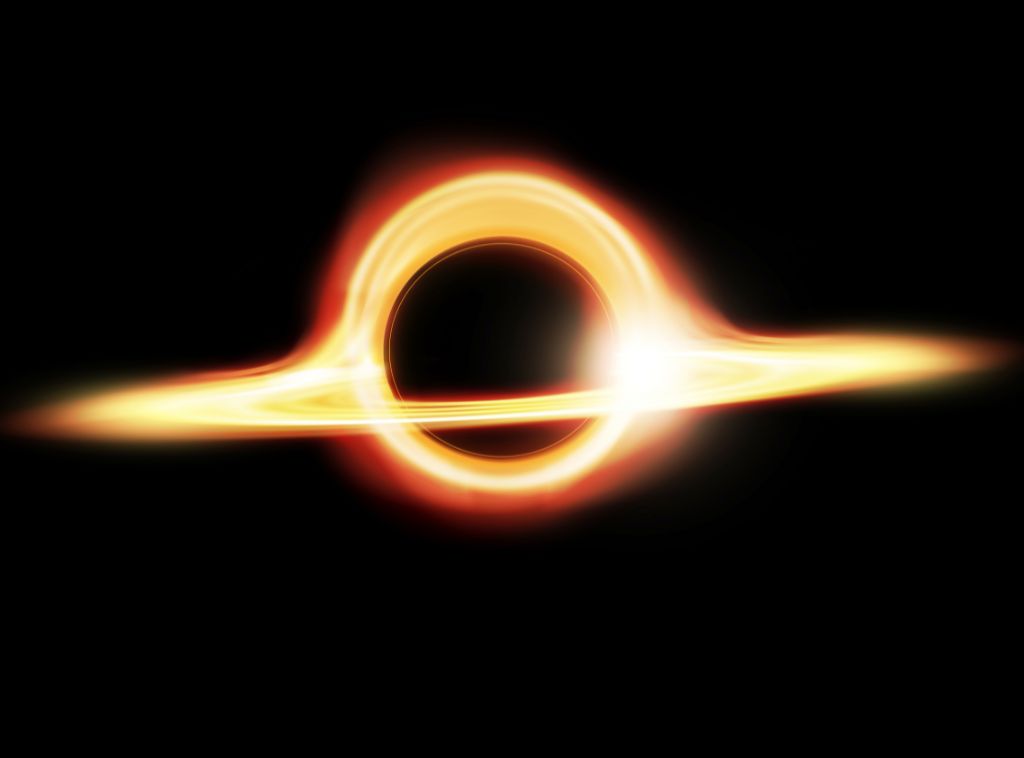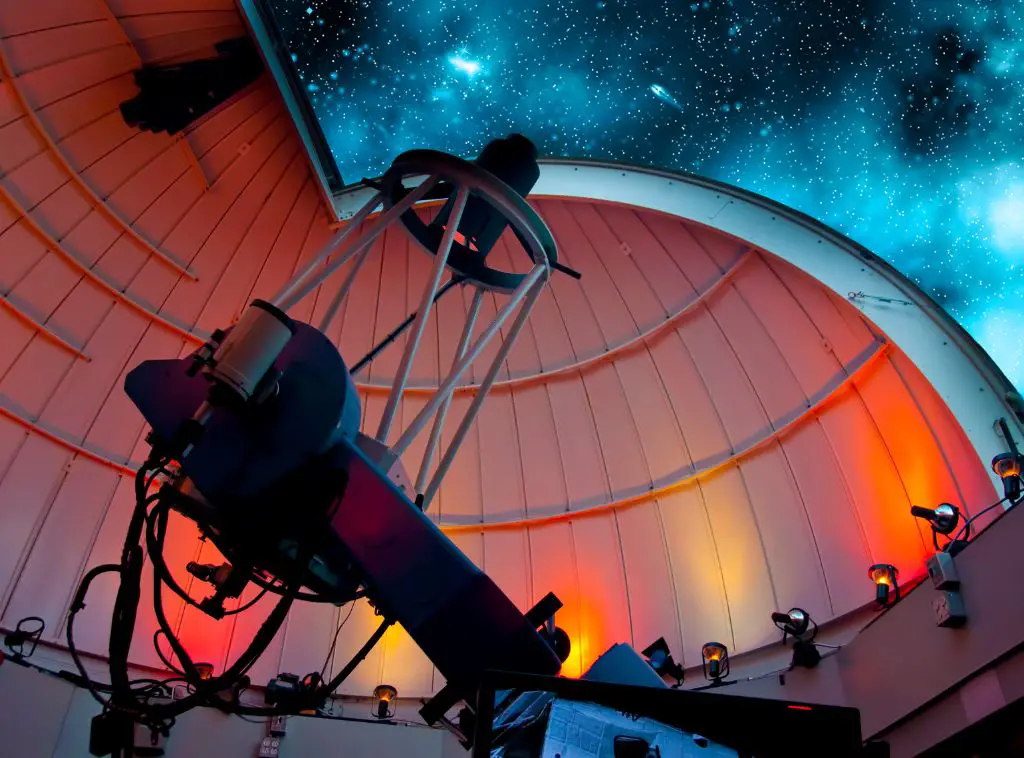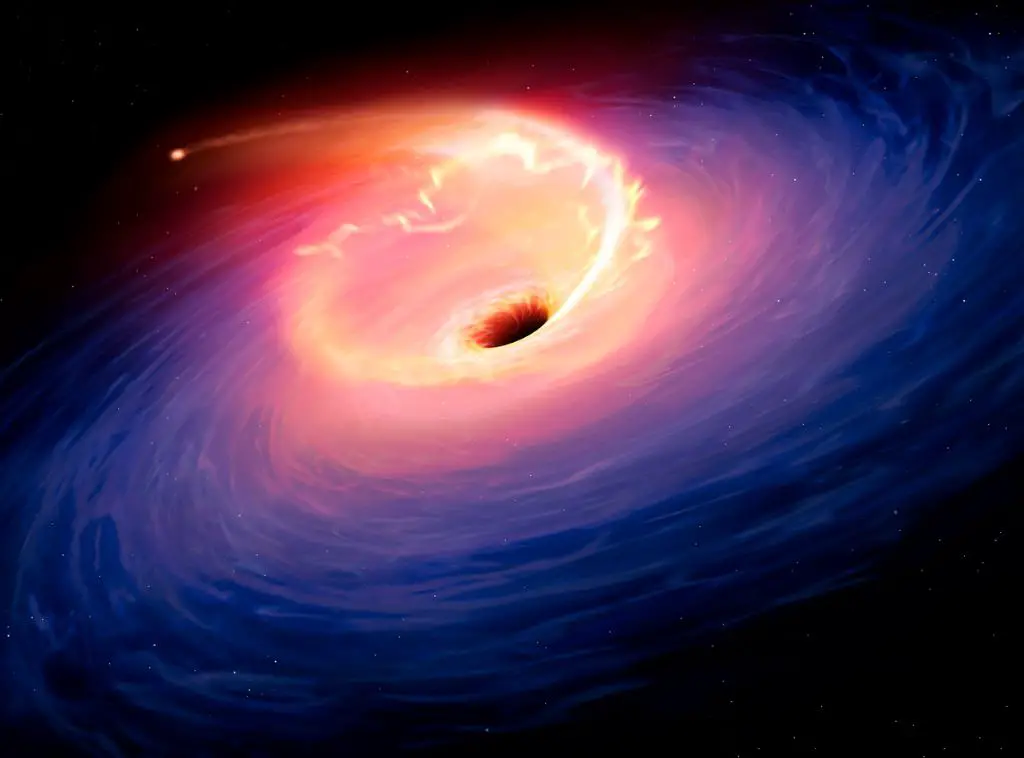In this article, we will focus on two remarkable supermassive black holes: Phoenix A and TON 618. Both of these black holes have garnered considerable attention in the scientific community for their unique properties and the valuable insights they offer into the nature of black holes and the universe as a whole.
We will provide an overview of Phoenix A and TON 618, compare and contrast their characteristics, and delve into the methods used to study these colossal cosmic entities. By examining these two supermassive black holes, we aim to enhance our understanding of their properties, behavior, and impact on the cosmic environment.
Phoenix A Black Hole vs. TON 618
Phoenix A Black Hole
The Phoenix A black hole, also known as Holmberg 15A*, is a supermassive black hole located at the center of the galaxy Holmberg 15A. This galaxy is situated within the Abell 85 galaxy cluster, approximately 700 million light-years away from Earth. The Phoenix A black hole has garnered interest due to its extraordinary size and the unique environment it inhabits.
The mass of the Phoenix A black hole is estimated to be around 100 billion solar masses, making it one of the the biggest black hole in the universe. Its size, or event horizon radius, is believed to be several times the diameter of our solar system. The Phoenix A black hole demonstrates the upper limits of black hole growth and challenges our understanding of the processes that lead to the formation of such massive objects.
The Phoenix A black hole and its host galaxy, Holmberg 15A, provide insights into the role of supermassive black holes in galaxy formation and evolution. Studies of the galaxy’s stellar population and dynamics have revealed signs of multiple past galaxy mergers. These mergers are thought to have contributed to the growth of the Phoenix A black hole, shedding light on the processes through which black holes can accumulate such immense mass. Additionally, observations of the Phoenix A black hole have contributed to our understanding of the relationship between the mass of a supermassive black hole and the properties of its host galaxy, furthering our knowledge of the intricate connections between these cosmic phenomena.
Also Read: Could a black hole ever hit earth?
TON 618 Black Hole
TON 618 is an ultra-massive black hole located in the center of a distant quasar, approximately 10.4 billion light-years away from Earth. This black hole has attracted significant attention due to its extreme mass and the fact that it powers one of the brightest known quasars. The quasar itself, TON 618, is named after the Tonantzintla Observatory in Mexico, where it was first discovered.
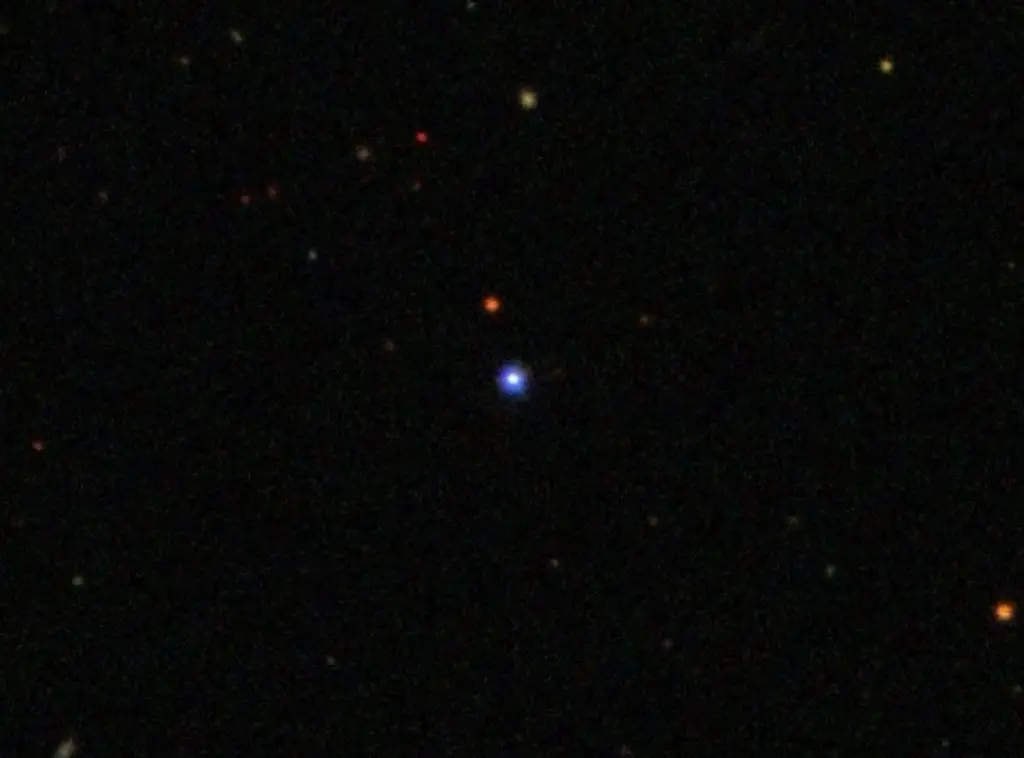
The mass of the TON 618 black hole is estimated to be around 66 billion solar masses, making it one of the most massive black holes ever discovered. Its event horizon radius, or the boundary beyond which nothing can escape, is thought to be about 195 billion kilometers, which is roughly 1300 times the distance from the Earth to the Sun. The extreme mass of TON 618 has prompted scientists to investigate how black holes can grow to such colossal sizes, particularly considering the age of the universe.
The TON 618 black hole is associated with various phenomena and discoveries that have contributed to our understanding of supermassive black holes and their environments. The quasar TON 618 is an example of an active galactic nucleus (AGN), where the black hole is actively accreting matter from its surroundings, producing intense radiation in the process. Observations of TON 618 have provided insights into the physics of accretion and jet formation around supermassive black holes. Additionally, the extreme mass of TON 618 has implications for the growth of black holes in the early universe, suggesting that black holes may grow more rapidly than previously thought, or that there may be alternative pathways for their formation. The study of TON 618 also offers valuable information on the relationship between black hole mass and host galaxy properties, contributing to our understanding of the co-evolution of galaxies and their central black holes.
Comparative Analysis: Phoenix A Black Hole vs TON 618
Both Phoenix A and TON 618 are among the most massive black holes known to date, with Phoenix A being more massive at approximately 100 billion solar masses, compared to TON 618 estimated 66 billion solar masses. The event horizon radii of these black holes are also immense, with TON 618’s radius estimated to be around 195 billion kilometers. The Phoenix-A black hole has an estimated diameter of 5 million light-years, traversing its entire circumference at the speed of light would take a staggering 5 million years.. While both black holes exhibit extreme properties, the differences in their mass and size illustrate the range of supermassive black hole characteristics and challenge our understanding of black hole formation and growth.
In terms of accretion disks and jets, TON 618 is an active galactic nucleus, meaning it has a prominent accretion disk and produces intense radiation as it actively consumes surrounding matter. This radiation makes TON 618 one of the brightest known quasars. The accretion processes around TON 618 provide insights into the physics of jet formation and the behavior of matter near a supermassive black hole’s event horizon. On the other hand, Phoenix A’s accretion disk and jet activity are less well understood due to its relatively less active nature and the unique environment of its host galaxy, Holmberg 15A.
The surrounding environments of these black holes also differ. Phoenix A is located in the center of the massive elliptical galaxy Holmberg 15A, which resides in the Abell 85 galaxy cluster. This location points to a history of galaxy mergers and interactions that have influenced the growth of the Phoenix A black hole. In contrast, TON 618 is situated at the heart of a distant quasar, making its host galaxy and environment more challenging to study due to the intense radiation emitted by the active galactic nucleus.
The impact of these black holes on their host galaxies and neighboring regions can be significant. Phoenix A’s presence in the center of Holmberg 15A suggests a strong influence on the galaxy’s formation and evolution, as well as the potential to trigger star formation or disrupt the orbits of nearby stars through gravitational interactions. The history of galaxy mergers associated with Phoenix A also points to the role of supermassive black holes in driving galaxy evolution.
Similarly, TON 618’s extreme mass and the intense radiation emitted by its quasar can significantly impact its host galaxy and the surrounding environment. The energy output from the active galactic nucleus can drive outflows of gas and dust, affecting star formation rates and influencing the overall structure and evolution of the host galaxy. Additionally, TON 618’s immense gravitational pull can also disrupt the orbits of nearby stars and contribute to the growth and evolution of its host galaxy.
In both cases, the study of Phoenix A and TON 618 highlights the intricate relationship between supermassive black holes and the galaxies they inhabit, providing valuable insights into the processes that shape the universe on the grandest of scales.
Observational Techniques and Challenges
A variety of methods and instruments have been employed to observe and study Phoenix A and TON 618. For Phoenix A, observations have been conducted using ground-based telescopes, such as the European Southern Observatory’s Very Large Telescope (VLT), as well as space-based observatories like the Hubble Space Telescope and the Chandra X-ray Observatory. These instruments have been used to analyze the motion of stars within the host galaxy Holmberg 15A, providing estimates of the black hole’s mass and size.
TON 618 has been studied using a combination of optical, infrared, and X-ray observations. Ground-based telescopes, such as the Sloan Digital Sky Survey (SDSS) and the Keck Observatory, have been used to observe the quasar and determine its distance, mass, and luminosity. Space-based observatories like the Hubble Space Telescope and the Chandra X-ray Observatory have also been employed to study TON 618’s radiation across various wavelengths, shedding light on the accretion processes and the environment around the black hole.
Studying supermassive black holes like Phoenix A and TON 618 presents several challenges. One of the primary challenges is their immense distance from Earth, which makes it difficult to obtain high-resolution images and detailed information about their properties and environments. In the case of TON 618, the quasar’s extreme brightness poses an additional challenge, as the intense radiation can outshine the host galaxy, making it difficult to study the galaxy’s properties and the black hole’s impact on its surroundings.
Another challenge in studying supermassive black holes is the need to observe across multiple wavelengths to gain a comprehensive understanding of their properties and behavior. This requires the use of various instruments and the coordination of observations, which can be logistically and financially demanding.
Technological advancements have played a crucial role in the study of black holes. The development of more powerful telescopes, such as the upcoming James Webb Space Telescope and the Extremely Large Telescope, promises to provide even more detailed observations of distant black holes like Phoenix A and TON 618. Advanced computational techniques, such as simulations and modeling, have also become indispensable tools in understanding the complex processes that govern black hole behavior and their interactions with their environments. As technology continues to advance, it will enable scientists to uncover more about these enigmatic cosmic phenomena and their role in shaping the universe.
Implications and Future Research
Studying supermassive black holes like Phoenix A and TON 618 holds great significance for several reasons.
- Firstly, these black holes provide valuable insights into the processes that govern the formation, growth, and evolution of black holes, pushing the boundaries of our understanding.
- Secondly, by analyzing their properties and behavior, we can gain a better understanding of the intricate relationship between supermassive black holes and their host galaxies, shedding light on the co-evolution of these cosmic entities.
- Finally, the study of these black holes can contribute to our knowledge of the large-scale structure of the universe, as well as the role of supermassive black holes in shaping the cosmic landscape.
The implications of studying Phoenix A and TON 618 extend to our broader understanding of the universe. For example, these studies can help us refine our theories of galaxy formation and evolution, as well as the role of black holes in driving these processes. Additionally, understanding the physics of accretion and jet formation around supermassive black holes can provide insights into the underlying processes that govern the behavior of matter and energy in extreme environments. In a broader context, these studies can also contribute to our understanding of the early universe and the conditions that led to the formation of the first black holes and galaxies.
Continued research on supermassive black holes like Phoenix A and TON 618 is crucial for expanding our knowledge of the universe. As new instruments and technologies become available, we will be able to probe these enigmatic objects in greater detail, potentially uncovering new phenomena and insights that have yet to be discovered. Future research may reveal more about the growth and feeding mechanisms of black holes, as well as the role of dark matter in their formation and evolution. Furthermore, the study of black holes could even provide clues to fundamental questions about the nature of spacetime, gravity, and the ultimate fate of the universe. The possibilities are vast, and continued research in this field promises to unlock even more exciting discoveries in the years to come.
Phoenix A Black Hole vs TON 618 Video
References:
Phoenix Cluster: A Fresh Perspective on an Extraordinary Cluster of Galaxies


